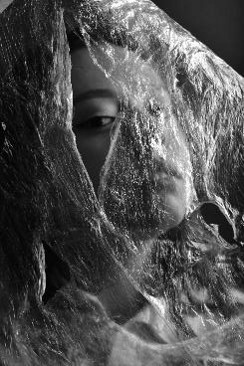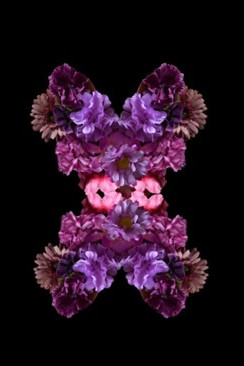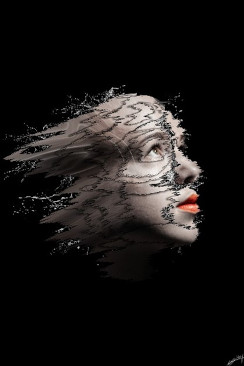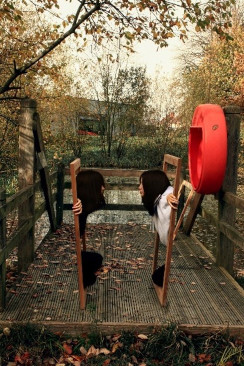| The Creative Arts Department of Queen Katharine Academy is dedicated to nurturing critical thinking and visual literacy through an engaging and supportive studio environment. Our curriculum is designed to foster independence through differentiated and self-directed work. We develop a lifelong aptitude and desire to learn, explore, create, and invent. We encourage students to experiment, persevere and arrive at their own unique solution while promoting skill building, discovery, and innovation. Incorporating art history and contemporary art into the curriculum exposes students to global awareness and viewpoints other than their own. Working in a collaborative peer-learning environment, students develop creative problem-solving skills, self-expression, and visual literacy. We help students to dream that they are capable and believe that we as a department will nurture their skills and together that students will achieve their fullest potential. |
Welcome to the Queen Katharine Academy Creative Arts Department.
As you can see from our vision and mission statement our students and their success is at the heart of what we do.
A successful art department is measured by the success of its student’s creativity. Our core purpose is for more of our students to dream and believe that they can fulfil their potential
Teaching and Learning:
We are committed to developing the quality of our teaching and learning as our core purpose. We will be a source for the promotion of inspirational teaching, creativity, and high-level thinking.
As teachers we will raise standards, expectations, achievement, and aspiration among our students by:
- Offering full access to an exciting, challenging, and relevant curriculum that will prepare our students for the rigours and demands of the new GCSE course and specification.
- Challenging and supporting all students to enable them to progress and reach their full potential.
- Structure and plan our curriculum, resources, and lessons to foster fluency, resilience, mastery, self-confidence, reasoning, and creative problem solving.
- To allow opportunities for our students to become independent and lifelong learners and have an appreciation for art.
Introduction
The creative arts department consists of 5 full time members of staff all with different areas of expertise. We offer a broad approach to photography, art and craft, having expertise in photography, printmaking, drawing and painting. Many students continue with photography to degree level with recent students gaining places at the university of Edinburgh and Cambridge School of Art.
Photography is all about being creative. The department aims to make students more aware of the world around them, both visually and morally. Students are encouraged to be active in decision making and engage in their work more, both visually and emotionally.
Key Stage Four
Students can choose to study Photography as a GCSE option.
GCSE Art and Design (Photography)
Exam Board: Eduqas
The GCSE course is a demanding one as students must be able to work independently and make perceptive judgements about their work. Students are required to demonstrate the knowledge, skills and understanding of static or moving images by recording light with light-sensitive materials such as photographic film or digital means. Students must be confident to make creative risks to develop work in an exciting experimental way. The course involves two components; a coursework portfolio which accounts for 60% of their marks and a 10-hour examination which accounts for 40%.
The four major areas are: -
- AO1 – Develop ideas informed by contextual and cultural studies of historical and photographical lens-based imagery to Increase awareness of the wide variety of photography, lens and light-based processes and outcomes and the differences between these.
- AO2 – Explore, Refine and reflect upon work as it progresses by selecting and experimenting with appropriate photographic media and processes, with controlled use of lighting, shutter speed, aperture, lenses, filters and, where appropriate, the purposeful manipulation of digital software.
- AO3 - Record ideas, first-hand observations, insights and judgments by photography and any other suitable means, such as sketches, diagrams, story boards, layouts and written notes that are relevant to personal intentions.
- AO4 – Present personal, imaginative final outcomes, together with selective evidence of thinking and production processes, and demonstrate critical understanding of visual and, where appropriate, other forms of communication demonstrate critical understanding of visual communication.
| What do students do with this knowledge or these skills? |
| We equip our students with insightful, academic knowledge of context and visual language to inform their visual interpretation of the world around them. We aspire for our photography students to develop into technically accomplished, skilled young photographers to become part of and understand the narrative of photography. The curriculum is designed to allow critical review and refinement so that students can make progress in becoming intuitive, perceptive, and focused in their creative intentions. Students will find their voice to use their photographical work to communicate powerful and inspired messages and meanings. Our KS4 (Key Stage 4) photography curriculum will prepare our students to be the creative leaders in whatever field they go into and be able to show real innovation and critical thinking. |
| How does the KS4 curriculum align to the National Curriculum? |
| The Department of Education sets out the GCSE subject content with which we are aligned by following the Eduquas Fine Art GCSE specification. Our chosen pathway of Fine Art may be defined as work developed primarily to communicate aesthetic, intellectual or purely conceptual ideas and meaning. Our students work on a body of practical research and development leading to the creation of a personal response relevant to our set theme through their Unit 1 personal portfolio (60%) and Unit 2 externally set exam (40%) Our curriculum aligns with the National Curriculum to provide students with opportunities to make a personal, artistic journey, processing initial ideas through visual and contextual research to a resolution to a theme. |
| What new knowledge or skills are students taught? | ||
| Term | Year 10 | Year 11 |
| Autumn Approximately 6 lessons |
Induction period: embed knowledge, understanding and skills · An introduction to DSLR Nikon camera set up and use. · Exploring and experimenting aperture and depth of field. · Recording practical observations and evidencing skills. · Researching and investigating contextual sources. · induction into capabilities of light: Properties of light measurement framing and angled shots. |
Students continue working on Unit 1 personal portfolio to refine outcomes. · Undertake sustained development, review, and refinement of ideas. · Demonstrate skilful use of the formal elements and visual dynamics. · Record digital evidence of their progress, in an on–going critical and analytical review · Respond to a theme, stimulus, or ideas · Make connections between their investigations and creative intentions · Realise intentions · Produce and present outcome(s). |
|
Spring Approximately 6 lessons |
Unit 1: Personal Portfolio
|
Unit 2: Externally Set Assignment
|
| Summer Approximately 6 lessons |
Unit 1 Personal Portfolio:
|
Students complete the Externally Set Assignment Students finish their Personal Portfolio and select work for submission. During the 10–hour period of sustained focus students will produce their outcome(s) responding to the Externally Set Assignment theme, based on their preparatory studies. |
| Rationale for this sequencing |
Students spend most of the Year 10 reinforcing knowledge and building skills in a range of photographical lens-based media, techniques, and post-production processes. We place significant emphasis on digital drawing, exploring, and documenting their environment as a way of visual thinking and understanding of what we see. Editing images and documenting experiences the heart of expression in every medium and it establishes visual confidence and is therefore a fundamental in our induction and throughout. There is more time in the curriculum for genuine refinement through trial and error, development, and increased proficiency. Students build up a more informed and broader awareness of contextual influences to understand how Photography shapes and informs our society today. Photographers and artist taught, inform their development of practical skills and promote critical analysis of visual language. Once students are equipped with higher skill set and the ability to make judgements on suitability, they then can work more independently to the Unit 1 coursework theme to create their own personal portfolio of work for coursework. They create their own digital work to become part of the visual narrative of the world in which we live. They learn the power and significance of what their own work can communicate. The four Assessment Objectives are intended to be integrated to form a coherent personal and sustained photographical journey that demonstrates the students’ research, reflections, ideas, planning and resolution in response to set theme(s). The Unit 2 Externally set exam response represents the culmination of the GCSE course. Delivery of this component is planned with appropriate guidance during the preparatory period, encouraging student independence in the development of ideas, intentions, and response(s) |
|
|
|
|
Key Stage Five
AS Photography (Eduqas)
Creative art department offers students the opportunity to study Photography at A-level.
At AS level, students must prepare for 100 % Coursework. Students start their studies with an introduction to DSLR camera controls, key lighting techniques, photographic studio set and lighting up, working with models and Photoshop post- production editing. They will then experiment with ideas based on Photo-artists and Digital photographers of their choice. Students will go on to investigate personal creative enquiry. Personal Creative Enquiry consists of an extended, exploratory project and outcomes based on themes and subject matter which are personal and meaningful to the learner allowing them to choose their direction and pick skills around their strengths. Coursework presentation must take the form of a digital workbook and portfolio of printed Images. Ending the year with a professional exhibition. Submitted work will be assessed using objectives A01 Develop, A02 Experimentation, A03 Record ideas and A04 Present. Work will be determined by the learner and teacher, assessed by the teacher and externally moderated. Total marks will be scored out of 100 marks. Each assessment objective will be worth 25% of the overall grade.
A2 Photography (Eduqas)
Component 1: This consists of a major, in-depth, practical, critical, and theoretical investigation with integrated extended written critical and contextual analysis. Learners create work consisting of an extended, exploratory project and outcomes based on themes and subject matter which are personal and meaningful to the learner allowing them to choose their direction and pick skills around their strengths. Learners drive unit 2, and will need to include a personal topic supported by a 3000-word written study: this accounts for 60% of their course. A 15-hour examination takes place in May, and this accounts for 40% of their final marks.
The courses build upon the work done in GCSE but at a much higher level. Students are expected to be self-motivated enough to work independently in the sixth form photography studio during and after school. They must have an inquisitive mind and want to explore ideas and problems posed by the visual world around them.
The assessment criteria are based on: -
- AO1 Develop – Convincingly communicate evidence of an inventive development of ideas through investigations; perceptively analyse objects, images, and artefacts. Demonstrate evidence of a mature understanding of purpose, meanings, and their related context. Quality of language communicates ideas and development with perceptive analysis.
- AO2 Explore – Communicates evidence of an inventive exploration of the use of materials, processes, techniques, and resources. Convincingly selects and demonstrates a mature understanding of reviewing and refining ideas, successfully identifying and interpreting relationships.
- AO3 Record – Perceptively records and analyses images, objects, and artefacts. Shows evidence of a mature understanding of intentioned, meanings and their related contexts. The quality of language aids recording and process with mature structure.
- AO4 Present – Presents evidence of a personal, creative, mature engaged and informed response realising intentions.
|
|
|
Staffing
Mrs S Erwin (Head of Creative Arts) Sara.Erwin@qka.education
Mrs J Hamaali (Deputy of Creative Arts) Joanna.Hamaali@qka.education




